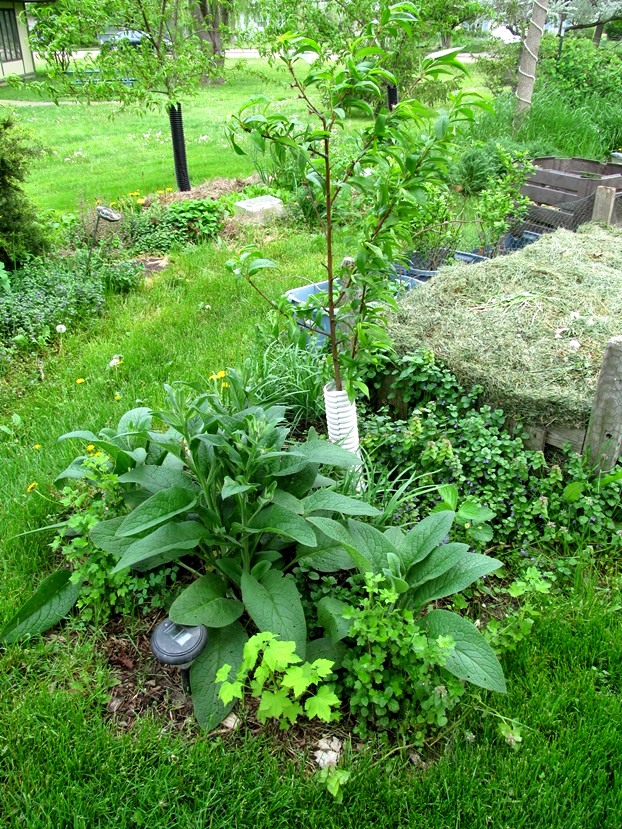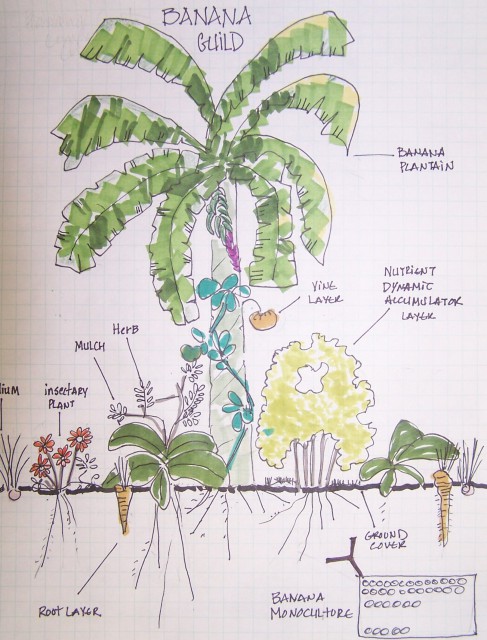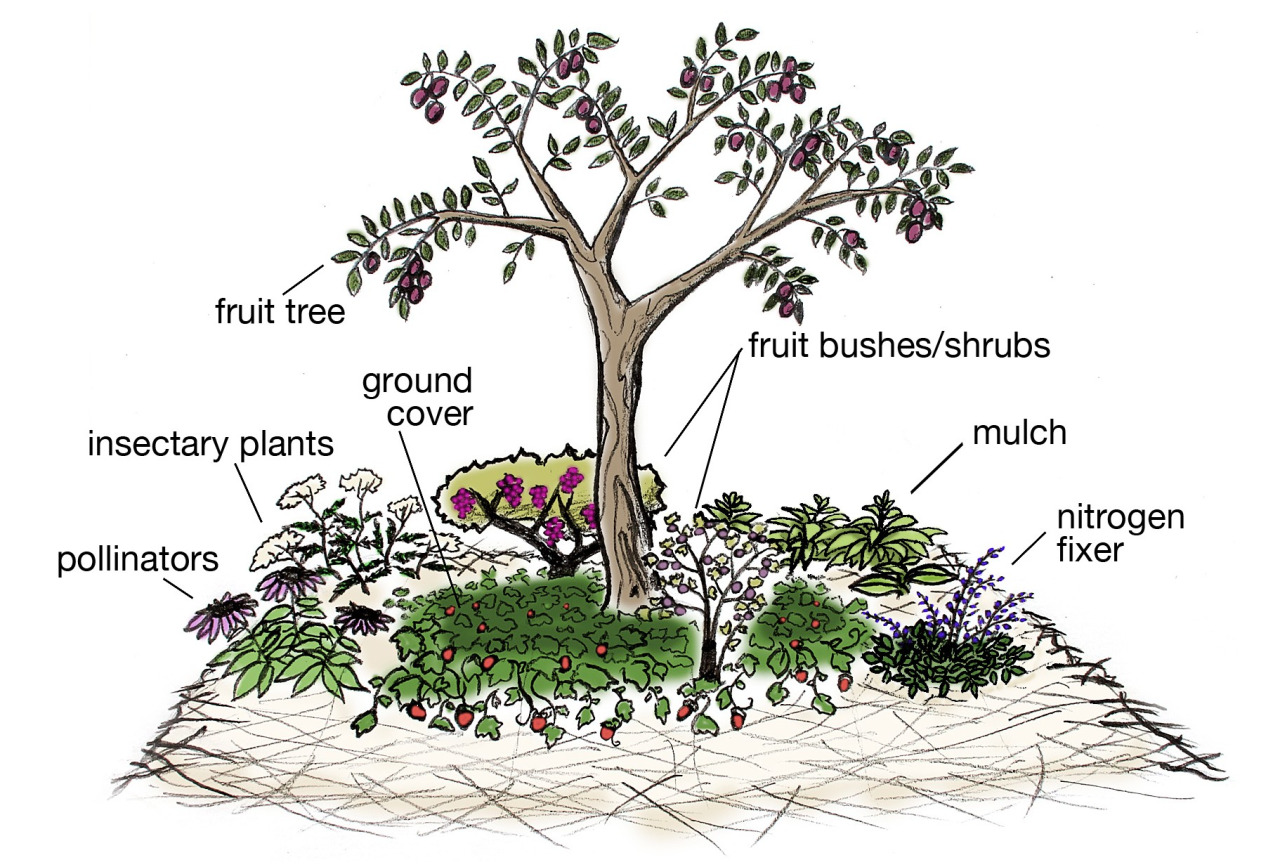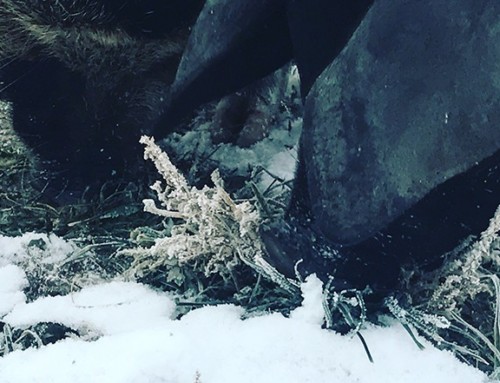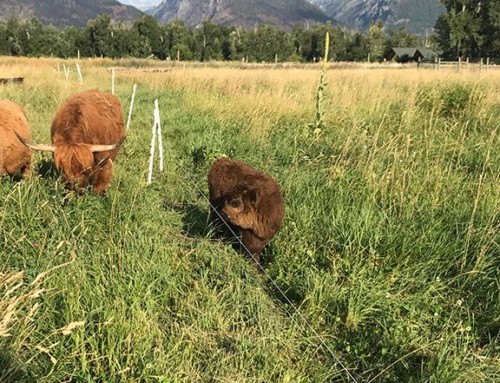Most fruit trees we see, whether in a yard or commercial orchard setting, have neat and tidy lawn or mulch rings underneath them. Many a gardener or farmer fears their yields will be reduced with the competition of other plants growing near the base of their fruit producers. You may also witness, or yourself be applying various soil amendments to boost the depleted fertility around your fruit tree, or spraying various chemicals or homemade concoctions to try and rid your trees of pests and diseases. What if there was a way to increase fertility and yields, and reduce pests and diseases, all while providing you with more food, flowers, and herbs? Well, lucky you, for such a thing exists! It is a permaculture technique called a tree guild. It’s so nice when things work out, isn’t it?
In permaculture, we believe in cooperation, not competition. Rightly then, a tree guild is a cooperative grouping of plants assembled together with the designed intent of creating a self-supporting system. The guild is centered on a tree that produces fruit, nuts, or anything else one wishes to enjoy. Once the decision of what type of tree is made, consideration goes into the needs of that tree. These needs typically include fertile and nutrient-dense soils with lots of organic matter, pest and disease prevention, and pollination.
The great thing is, we can strategically place plants in close proximity to our main tree to meet each of these needs. Through a little research and consideration of what else we need, we can receive additional yields from these plants as well; our rewards for partnering with nature. Now, instead of having to spray chemicals or mow to maintain our trees and the spaces underneath, our maintenance becomes harvesting herbs, flowers, and extra food, with a little bit of cutting some plants and using them as mulch to build soil and cycle nutrients for the system’s benefit.
The tree guild is a good expression of a basic truth about permaculture. Thinking of needs, yields, and characteristics of each element we desire to place onto our land and therefore into our lives offers an opportunity to creatively build meaningful relationships. We learn how plants, insects, and animals interact with one another. We also gain insight and understanding into our needs, the needs of others, and the needs of the environment at large, and how through designing intentional, meaningful connections to each of these we can benefit all. So, tree guilds are not simply about producing healthy, refreshing, and sweet-tasting fruit based on the development of meaningful relationships, but also invite us into a healthy, refreshing, and sweet way to live.
Blessings,
Grant

